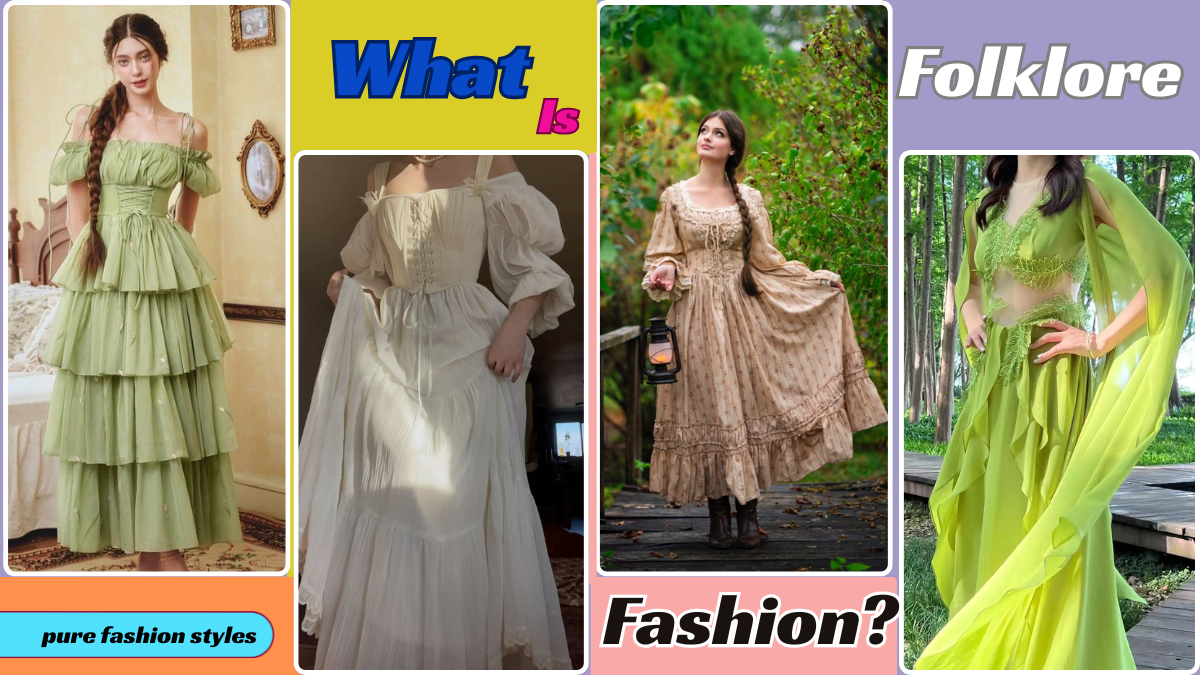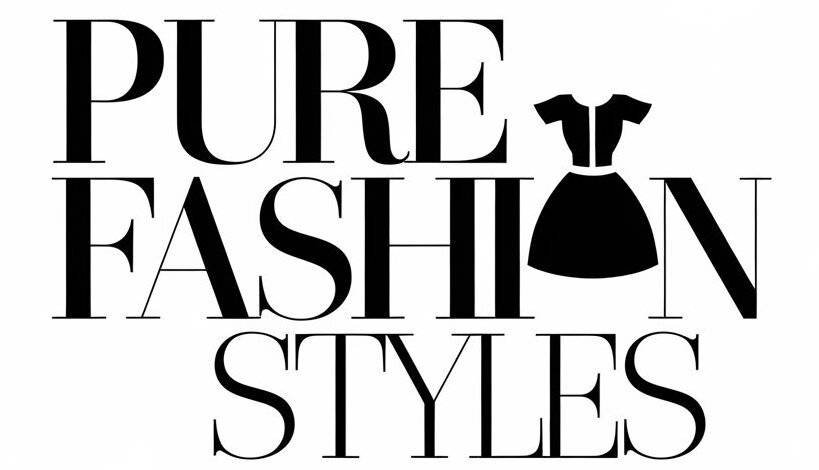What Is Folklore Fashion? Meaning, Trends & Style Tips

Folklore fashion is more than a trend—it’s a celebration of heritage, culture, and handcrafted beauty. In recent years, this timeless style has found its way back onto fashion runways and into everyday wardrobes. With roots in traditional garments from around the world, folklore fashion blends natural fabrics, detailed embroidery, and cultural storytelling.
It’s closely linked to sustainable fashion and the slow fashion movement, making it both meaningful and modern. Whether inspired by boho, cottagecore, or indigenous designs, folklore fashion invites you to express yourself through clothing that connects the past with the present.
What Is Folklore Fashion? (Definition + Quick Summary)

Folklore fashion is a clothing style inspired by traditional garments, cultural stories, and handcrafted details. It often features embroidery, earthy colors, flowing silhouettes, and natural fabrics like cotton or wool. This style reflects the values of storytelling, identity, and craftsmanship. Unlike modern trends, folklore fashion connects deeply with heritage and roots. It’s not just a look—it’s a way to honor traditions while embracing sustainable, folk-inspired fashion that feels authentic, timeless, and personal.
Also read: Is Fashion Designing a Good Career? Discover Its True Potential!?
A Global History of Folklore-Inspired Clothing
Folklore fashion has deep roots in cultures across the world. From Eastern Europe’s embroidered blouses to West Africa’s vibrant Aso Oke and South America’s handwoven ponchos, each piece tells a story. These traditional garments were often worn for festivals, daily life, or ceremonies. Over time, their unique designs influenced modern fashion. Today, folklore-inspired clothing celebrates this rich history by blending global traditions with fresh, creative styles that honor the past while embracing the present.
Key Elements That Define Folklore Fashion
Folklore fashion stands out with its earthy colors, hand-stitched embroidery, and flowing shapes. Common fabrics include linen, cotton, and wool—natural materials that feel soft and timeless. You’ll often see floral patterns, geometric motifs, and traditional symbols. Layered skirts, puffed sleeves, and vests are also popular pieces. Each detail is meaningful, often passed down through generations. These handcrafted elements not only look beautiful but also reflect cultural pride, storytelling, and the charm of slow, artisan-made fashion.
How Folklore Fashion Differs from Boho & Cottagecore
| Feature | Folklore Fashion | Boho Style | Cottagecore Style |
|---|---|---|---|
| Cultural Roots | Deep, historical | Artistic, modern | Nature-inspired |
| Materials | Natural, handmade | Flowy, layered | Soft, vintage |
| Embroidery/Details | Symbolic, traditional | Decorative, eclectic | Simple, delicate |
| Focus | Identity & heritage | Self-expression | Romance & simplicity |
While folklore, boho, and cottagecore fashion may look similar, they have different roots. Boho is more carefree and artistic, and cottagecore focuses on soft, countryside vibes. Folklore fashion, however, is deeply tied to culture and tradition. It uses real historical garments, handmade embroidery, and symbolic patterns passed down over time. Unlike the other styles, folklore fashion honors specific cultural identities, making it more meaningful and rich in history—not just a trend or aesthetic.
Modern Designers Who Are Reviving Folklore Fashion

Today, many designers are bringing folklore fashion back to life. Brands like Zimmermann and Ulla Johnson mix traditional embroidery with modern cuts. Others, like BODE and Stella Jean, highlight artisan-made pieces and cultural stories. These designers honor the past while making folklore fashion wearable today. Their collections often support slow fashion and ethical production, helping preserve ancient crafts. By blending old and new, they keep the spirit of folklore alive in a fresh, stylish way.
Styling Folklore Fashion for Everyday Wear

| Element | Description |
|---|---|
| Embroidery | Hand-stitched symbols and patterns |
| Fabrics | Cotton, linen, wool |
| Colors | Earthy tones, bold accents |
| Silhouettes | Flowy skirts, puffed sleeves |
| Accessories | Beaded jewelry, woven bags |
You can easily add folklore fashion to your everyday look. Try pairing a hand-embroidered blouse with jeans or layering a flowing skirt with a simple top. Add folk-inspired accessories like beaded earrings, woven bags, or a colorful scarf. Stick to earthy tones and natural fabrics for an authentic feel. Mixing old-world charm with modern pieces creates a balanced style that’s both unique and wearable. Folklore fashion is all about expressing yourself while honoring timeless traditions.
Cultural Significance & Respect in Folklore Fashion
Folklore fashion is rooted in real cultures and traditions, so it’s important to wear it with respect. Each design, symbol, or stitch often holds deep meaning. When embracing this style, it’s best to learn about its origins and support brands that work with local artisans. This helps preserve the culture behind the clothing. Wearing folklore fashion respectfully means appreciating its beauty and honoring the people and stories that brought it to life.
Folklore Fashion & Sustainable Slow Fashion Movements
| Country/Region | Traditional Garment | Key Features |
|---|---|---|
| Ukraine | Vyshyvanka | Geometric embroidery |
| Japan | Kimono | Wide sleeves, symbolic prints |
| Peru | Poncho | Wool, vibrant patterns |
| Nigeria | Aso Oke | Handwoven, colorful textures |
| India | Phulkari | Floral embroidery, bright silk |
Folklore fashion naturally fits with slow fashion values. It focuses on quality, not quantity—using natural fabrics, handmade details, and timeless designs. Many folklore pieces are made by artisans, not machines, reducing waste and supporting fair wages. Choosing folklore-inspired clothing means you’re investing in sustainable fashion that lasts longer and honors tradition. It’s a thoughtful way to dress that supports the planet and celebrates cultural heritage at the same time.
DIY & Thrifting Tips for Your Folklore-Inspired Wardrobe
You don’t need to spend a lot to enjoy folklore fashion. Try thrifting for vintage blouses, embroidered skirts, or woven bags. Look for natural fabrics and handmade details. You can also add personal touches with DIY embroidery or patchwork on old clothes. Upcycling gives new life to worn items and adds a creative, meaningful twist. Building a folklore-inspired wardrobe through thrifting and DIY is fun, budget-friendly, and supports sustainable fashion choices.
Folklore Fashion Around the World: Cultural Spotlights
| Source Type | Description |
|---|---|
| Thrift Stores | Affordable vintage folklore pieces |
| Artisan Markets | Handmade, authentic clothing |
| Ethical Brands | Fair trade, sustainable collections |
| DIY Projects | Personalized and upcycled items |
Folklore fashion looks different around the world, but it always tells a story. In Ukraine, the vyshyvanka features bold embroidery with deep meaning. In Japan, the kimono shows elegance and tradition. West Africa’s Aso Oke shines with handwoven beauty, while Peru’s ponchos are warm and symbolic. Each style reflects the values, beliefs, and history of its people. Exploring global folklore fashion helps us appreciate diverse cultures and the unique beauty they bring to clothing.
FAQS
What is folklore fashion?
Folklore fashion is a style inspired by traditional clothing from various cultures. It includes elements like embroidery, natural fabrics, handcrafted details, and symbolic designs that reflect heritage and storytelling.
How is folklore fashion different from boho or cottagecore?
Folklore fashion has deeper cultural roots and is based on actual historical garments. Boho and cottagecore are more aesthetic-based, while folklore fashion often carries spiritual or traditional meaning.
Is folklore fashion sustainable?
Yes. It typically uses natural materials and supports slow fashion through handmade, long-lasting pieces crafted by artisans using eco-friendly techniques.
Can I wear folklore fashion every day?
Absolutely! You can mix folklore pieces like embroidered blouses or woven bags with modern clothing for a stylish everyday look that feels both unique and meaningful.
Where can I find authentic folklore fashion pieces?
Try thrift stores, artisan markets, fair trade brands, or online shops that collaborate with local craftspeople. Look for pieces made with natural materials and traditional techniques.
Conclusion
Folklore fashion is more than just clothing—it’s a way to wear stories, culture, and craftsmanship. It connects us to history, supports sustainable choices, and celebrates diversity. Whether you wear it daily or for special occasions, folklore fashion lets you express your identity with meaning. By choosing pieces made with care and honoring their roots, you’re not just following a trend—you’re keeping traditions alive through beautiful, thoughtful style.

